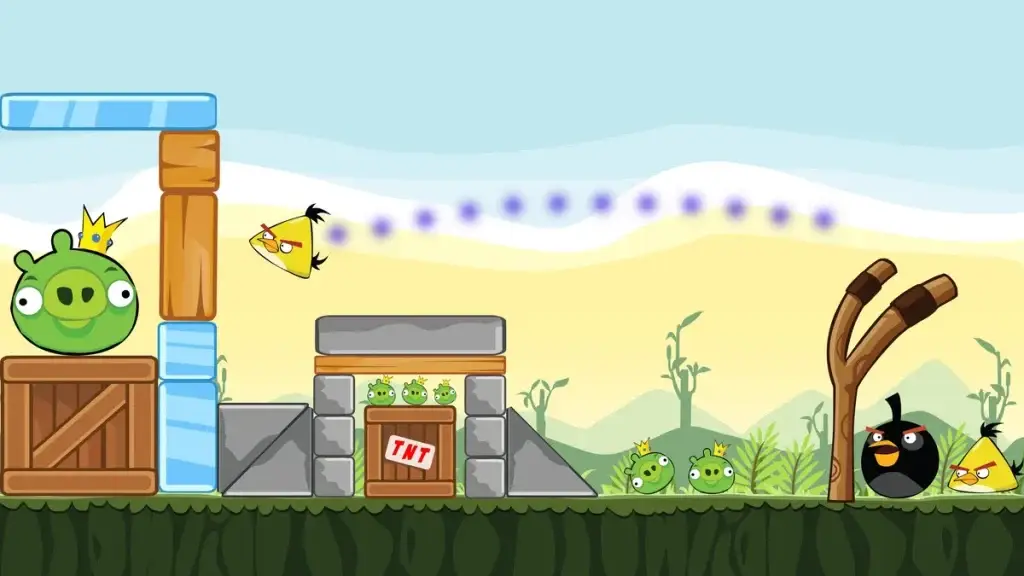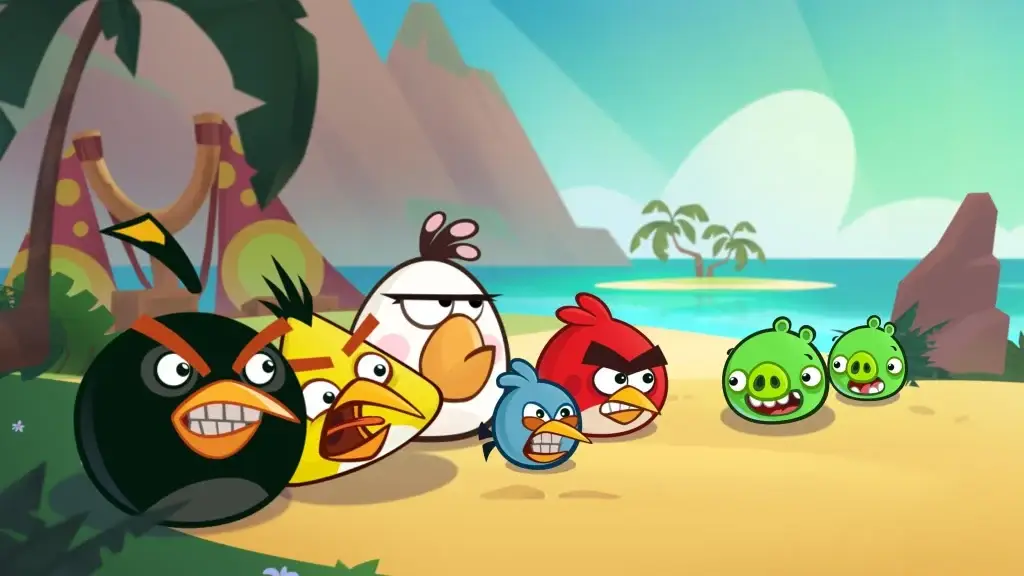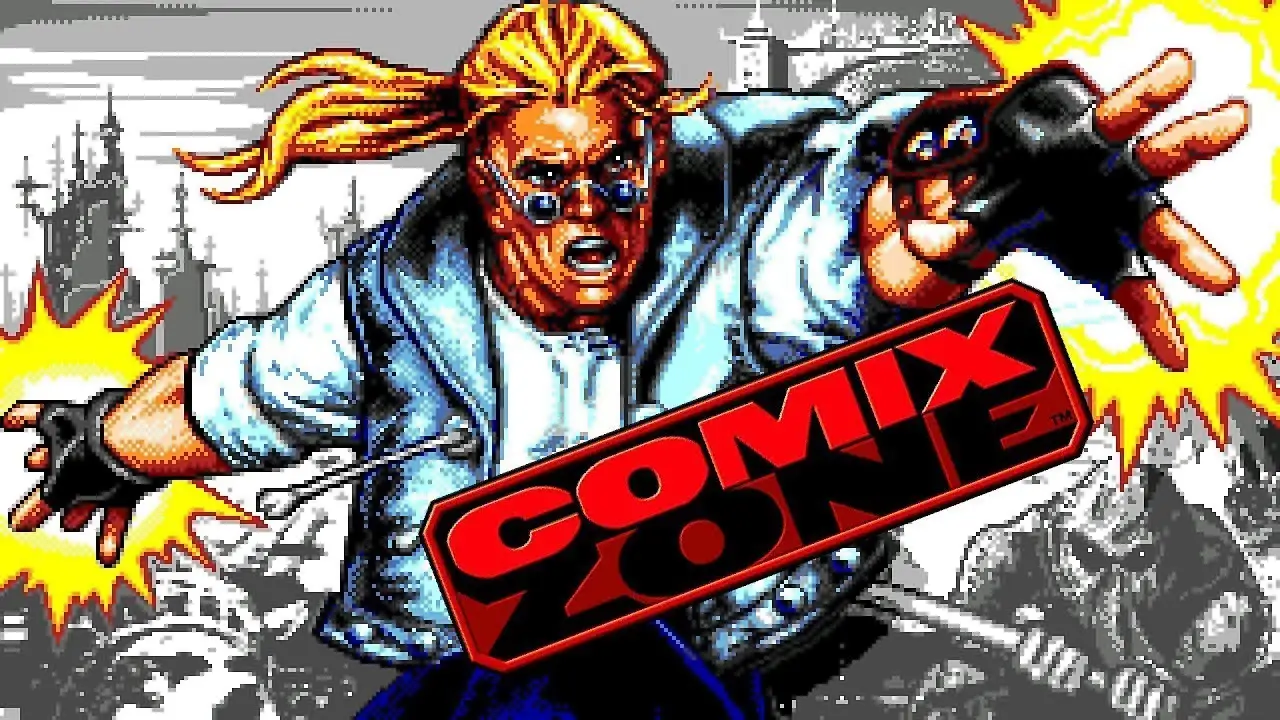In 2009, the world of mobile gaming changed forever when Angry Birds first hit the screens. No one could have imagined that a casual project with funny birds and angry pigs would not only conquer the market but would become a cultural phenomenon. More than ten years later, the popular game continues to remain in the hearts of both children and adults. And it’s no wonder because its unique combination of humor, simplicity, and strategic depth created a unique gaming experience.
“Angry Birds” and their triumphant path to fame
The history of the creation of the Angry Birds game began with an ambitious idea of a small Finnish studio Rovio, which was founded in 2003 by three students: Niklas Hed, Järn Vakkarinen, and Kim Dickerson. After several unsuccessful attempts to create a hit, the team decided to take on a project that was supposed to be simple but interesting. The prototype for the main characters was ordinary birds – a concept that arose almost by accident based on the sketches of the studio’s artists.
Angry Birds, as they are affectionately called by fans, was inspired by simple physical principles – launching birds with a slingshot turned out to be so exciting that the first users literally could not tear themselves away from the screens. After its release in December 2009, the casual game began to rapidly gain popularity. Its ease of control and unique characters attracted thousands of users and later millions.
Why did the Angry Birds game become so popular so quickly?
The secret lies in several components of the project. First of all, simple and intuitive gameplay. Using a slingshot to launch birds, and destroying the fortifications of evil pigs is so exciting that you can spend hours in the process without noticing the time. Already in the first year after its release, the game was downloaded more than 50 million times, which was a phenomenal result for that time.
Users loved the variety of characters. Each bird has its own unique abilities: red ones – basic attackers, yellow ones – accelerated in flight, black ones – exploded, turning everything around into dust. The variety of abilities allowed players to come up with new strategies, which added depth to the gameplay. Humor also played a role: evil pigs, smiling maliciously from their fortifications, caused laughter and additional motivation to win.
A cult game for all ages: what is the secret of success?
A cult project for all ages – this is how you can characterize the game Angry Birds. The secret of success lies in its absolute accessibility and excitement. Simple mechanics allow literally everyone to play – from children to the elderly. There are no complex training levels or confusing instructions. All you need is to pull the slingshot and launch the bird into the pigs’ fortifications. This approach is ideal for short gaming sessions on the subway, in queues, or during breaks at work.
The legendary Angry Birds and its influence on mobile games
 The project not only became a hit but also changed the idea of mobile games in general. The concept showed that mobile devices can offer a high-quality gaming experience that is not inferior to console entertainment. The Angry Birds phenomenon started a whole genre of casual games, inspiring many developers to create similar projects.
The project not only became a hit but also changed the idea of mobile games in general. The concept showed that mobile devices can offer a high-quality gaming experience that is not inferior to console entertainment. The Angry Birds phenomenon started a whole genre of casual games, inspiring many developers to create similar projects.
The developers used a bright and attractive visual style that was easy to remember:
- Bright visual style: The use of rich colors and clear lines made the graphics immediately recognizable and easy to remember.
- Cartoon characters: The main characters, birds and pigs, were drawn in a cartoon style to make the game fun.
- Simple but expressive animations: Details were carefully worked out to convey the emotions of the characters – from the rage of the birds to the grins of the pigs.
- Musical accompaniment: Composer Ari Pulkkinen created music that perfectly matched the emotional atmosphere of the game.
- Sound effects of exploding birds and falling structures added dynamism, enhancing the feeling of interaction with the environment.
Parts and development of the franchise: from the original to “Angry Pigs”
After the success of the first Angry Birds game, the developers did not stop there. The franchise began to grow rapidly, releasing more and more new versions and spin-offs. The project was continued in the form of Angry Birds Rio, Angry Birds Seasons, and even Angry Birds Star Wars, where the birds were transformed into heroes of a galaxy far, far away.
Each new part brought something of its own:
- New characters: unique birds with new abilities appeared.
- Unique levels: the developers constantly expanded the game, adding many unique levels with various obstacles and traps.
- Additional game mechanics: for example, in Angry Birds Space the physics changed – elements of weightlessness appeared.
- Collaborations with popular films and franchises: in versions like Angry Birds Star Wars, players encountered locations inspired by the Star Wars universe.
- Story elements: in each part, the developers tried to tell a small story.
With all this, the main idea was preserved – exciting gameplay with simple but deep mechanics. Users could enjoy not only classic levels but also new locations inspired by various films and events.
Public Enemy Number One – “Evil Pigs”
Pigs have become an integral part of the universe. Funny green opponents became favorites of the public, thanks to their comical behavior and attempts to hide behind ingenious structures. They represented a symbol of all the difficulties that the participants had to overcome. And although pigs are enemies, players still feel a certain sympathy for them thanks to their funny animations and sounds.
The evil pigs have become so popular that they even got their own concept — Bad Piggies, where it became possible to look at the story from a different angle and help the creatures build various vehicles.
The Angry Birds game is an eternal classic.
The project continues to live thanks to its simplicity, fun, and unique atmosphere. Years after the release of the legend, Angry Birds remains relevant thanks to constant updates, new levels, and active support from the developers. They do not forget about their audience and regularly add something new to maintain interest.
The concept has become a symbol of the era of mobile entertainment when all you need for a great pastime is a smartphone and a few minutes of free time. People continue to return to the Angry Birds game because it gives simple and honest joy from destruction, victory, and an exciting process.
Conclusion
 The Angry Birds game does not lose its relevance even today. It inspired many developers and showed how simple gameplay can win the hearts of millions. The future of the project seems bright: the creators continue to delight fans with new updates and versions, and the concept itself remains a symbol of mobile entertainment.
The Angry Birds game does not lose its relevance even today. It inspired many developers and showed how simple gameplay can win the hearts of millions. The future of the project seems bright: the creators continue to delight fans with new updates and versions, and the concept itself remains a symbol of mobile entertainment.
It’s time to pick up the slingshot again and go on an adventure. Who knows what other evil pigs are waiting for their fate behind those green fortifications?
 en
en  ru
ru  de
de  ar
ar  es
es  nl
nl  hi
hi  fr
fr  it
it  pt
pt  el
el 



